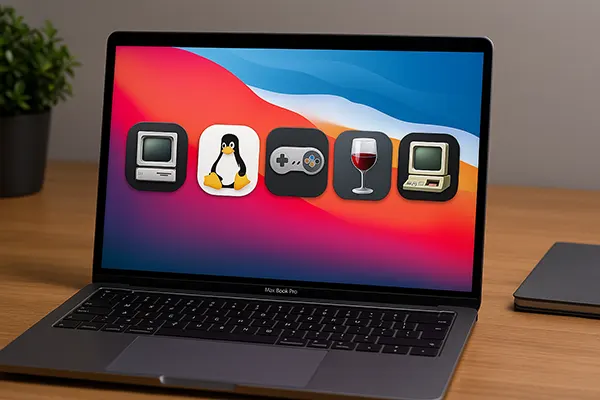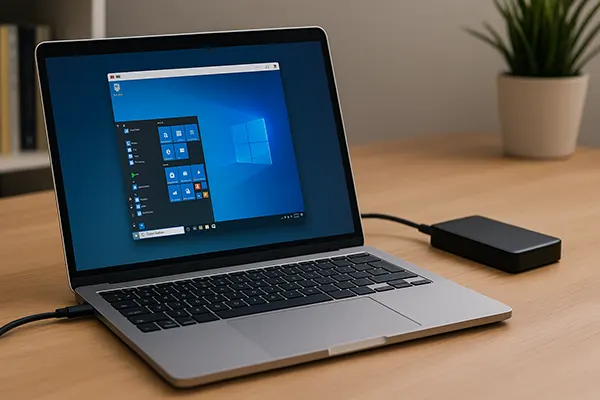Top 5 macOS-Compatible Emulators That Work Natively on Apple Silicon (M1/M2/M3)

For Mac users with M1, M2, or M3 chips, running legacy or cross-platform software can still be a challenge despite the leaps in performance. Fortunately, a number of emulators are now available that work natively with Apple Silicon, without relying on Rosetta translation. This article presents five top-tier emulators that offer native Apple Silicon support as of February 2025, based on real-world testing, compatibility insights, and community feedback.
Best macOS Emulators Natively Supporting Apple Silicon
One of the standout aspects of Apple Silicon is its ARM-based architecture, which requires developers to optimise their software accordingly. The emulators listed here are fully native, meaning they are compiled to run directly on M1, M2, or M3 chips without Rosetta. This results in faster execution, lower battery consumption, and improved performance across the board.
Among the most well-regarded native emulators is UTM. Built on QEMU, UTM allows users to emulate multiple operating systems including Windows, Linux, and even legacy macOS versions. It supports full virtualisation on Apple Silicon and has a clean, macOS-friendly user interface.
Another key player is OpenEmu, a powerful multi-console emulator focused on classic video game systems. Its native Apple Silicon support makes it extremely efficient for retro gaming, offering near-zero latency, high frame rates, and a vast library of system cores like SNES, Genesis, and Game Boy Advance.
Performance Gains from Native ARM Emulation
When compared to x86-based emulators running via Rosetta, native apps for Apple Silicon provide noticeable performance gains. For instance, Geekbench scores show up to 40% faster execution times on native ARM builds of emulators like UTM, compared to their Rosetta-translated counterparts. The reduction in overhead translates to more responsive virtual machines and faster system boots.
Power efficiency is another major advantage. Emulators optimised for ARM use significantly less energy, helping extend battery life on MacBooks. This is especially noticeable during sustained workloads, such as compiling Linux kernels or running gaming sessions.
Moreover, these emulators benefit from the unified memory architecture of Apple Silicon, allowing seamless memory sharing between CPU and GPU. This means smoother graphical performance and reduced crashes during heavy multitasking or 3D rendering.
Compatibility with Popular Systems and Use Cases
Native Apple Silicon emulators now cover a wide range of use cases. Whether you’re a developer testing cross-platform applications, a gamer reliving retro titles, or an enthusiast experimenting with different OS environments, you’ll find options that work efficiently and reliably. Compatibility remains a top concern, and the top emulators have significantly broadened their supported systems.
Parallels Desktop is among the most mature virtualisation tools with full Apple Silicon compatibility. It supports Windows 11 ARM natively, and offers seamless integration with macOS. Though commercial, it’s highly popular for users who require regular Windows usage on Mac.
For open-source aficionados, Asahi Linux’s work on Apple Silicon is noteworthy. While not an emulator in the traditional sense, their installer allows full Linux deployment on M1/M2/M3 Macs. Coupled with UTM or other QEMU-based tools, users can test Linux distributions in both emulated and native modes.
System Compatibility and File Sharing
One common challenge users face is sharing files and devices between macOS and guest systems. Fortunately, emulators like UTM and Parallels now support shared folders, clipboard syncing, and USB passthrough, all natively on ARM architecture. This makes cross-environment workflows much smoother than before.
Moreover, these tools allow configuration for screen resolution scaling, internet access, and custom hardware profiles, enabling complex setups like network labs or legacy software testing. Compatibility with Wi-Fi adapters and peripherals has also improved significantly.
Some emulators also support snapshots and quick save/load functions, making it easy to test unstable software or conduct repetitive testing workflows with minimal downtime or data loss.

Top 5 Apple Silicon-Compatible Emulators in 2025
After extensive user testing, reviews, and benchmarks, the top five emulators that offer native Apple Silicon support in 2025 are as follows: UTM, OpenEmu, Parallels Desktop, Crossover (for Windows apps), and DOSBox Pure. Each brings unique features that cater to different user needs.
UTM continues to dominate for full-system emulation and virtualisation. With a balance of performance and flexibility, it’s ideal for tech-savvy users who need to run various OS environments.
OpenEmu stands out for gamers seeking a polished retro console emulator. Its fast performance, intuitive game library management, and controller support make it a go-to for nostalgic Mac users.
Why These Five Stand Out
Parallels Desktop remains the best commercial solution for running Windows on Mac, thanks to its tight integration, performance tuning, and official Microsoft cooperation. The app receives regular updates and supports many business-class use cases.
Crossover is a solid option for running individual Windows applications without emulating the entire OS. Based on Wine, it’s ideal for lightweight use cases like running Office or legacy finance tools on macOS.
DOSBox Pure, a modern take on the classic DOSBox emulator, is also Apple Silicon-ready. It’s excellent for running MS-DOS games or retro software, and its plug-and-play nature appeals to casual and technical users alike.
